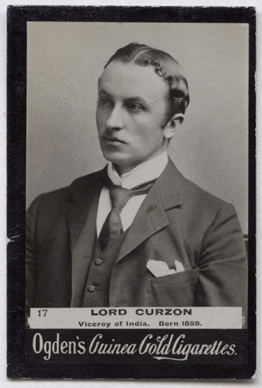The row over Lord Curzon Gate
- Posted By
10Pointer
- Categories
History & Culture
- Published
20th Aug, 2022
-
Context
The Bardhaman municipality has decided to erect a statue of an erstwhile maharaja in front of the landmark Curzon Gate in the city.

About the heritage site
- On the occasion of coronation of Sri Bijoy Chand Mahatab, Maharaja of Bardhaman built the gigantic gate in 1903.
- The visit of the then Viceroy of India Lord Curzon in 1904 resulted in the name of the structure as “Curzon Gate”.
- In post-Independence era, it was renamed as “Bijoy Toron”.
- The Curzon Gate was declared a heritage site by the West Bengal Heritage Commission on 28 February, 2006.
Who was Lord Curzon?
- Born in 1859, George Nathaniel Curzon was a British conservative politician.
- He was a true successor of Lord Dalhousie.
- He was a great imperialist, authoritarian in temperament, ruthless in his ways and wanted to achieve too much at too great a pace.
- The time of his governorship (1899-1905), was the formative phase of Indian national movement.
- Thus he tried to strangulate Indian nationalism and freedom movement by all fair and foul means.
- He served as Under-Secretary of State for India (1891-1892), and for Foreign Affairs (1895-1898), before being appointed Viceroy of India in 1899.
- As viceroy, his administration was known for intense activity and emphasis on efficiency.
- Curzon created a separate Muslim majority province of the North-West Frontier Province, sent a British expedition to Tibet, established a separate police service, and established the Archaological Survey of India, in order to study and protect historical monuments. (Barbara and Thomas Metcalf, ‘A Concise History of Modern India’)

How and why did the partition of Bengal take place?
- Calcutta was the capital of the British Raj, and Bengal Presidency was one of the largest provinces in India, encompassing present day West Bengal, Bangladesh, Bihar, parts of Chhattisgarh, Odisha, and Assam.
- For long, the British had maintained that Bengal was too large to efficiently manage and administer; it was also believed that with Calcutta as the nerve centre of the educated nationalists, the resistance to colonial rule would only increase.
- Home Secretary H H Risley noted in 1904, “Bengal united is a power; Bengal divided will pull in several different ways.”
- In July 1905, Curzon announced the partition of Bengal into two provinces.
- East Bengal and Assam, with a population of 38 million, was predominately Muslim, while the western province, called Bengal, was reduced to 55 million people, primarily Hindus.
- Protests began almost immediately after the announcement, with meetings taking place in more than 300 cities, towns, and villages across Bengal.
- The educated Bengali bhadralok saw this move as an attempt to break apart their homeland, and curb their influence in the region, while later nationalists would argue that it was indicative of the British’s divide and rule policy.
Consequences of the partition
- Popular anger against partition had been brewing since the British announced their scheme, but grew into a stronger and more organized movement after it was implemented in 1905.
- In opposition to the partition, nationalist leaders organized a campaign of boycott of British goods and institutions, and encouraged the use of local products.
- After a formal resolution was passed at a meeting in Calcutta in August 1905, the Swadeshi movement began.
- Students were at the forefront of the movement, which was characterized by boycotts of British educational institutions and law courts, and large bonfires of imported cotton textiles.
- There was a surge in nationalist rhetoric, and the song ‘Bande Mataram’, set to music by Rabindranath Tagore, became the informal anthem of the movement.
- The Swadeshi movement and boycott was not restricted to Bengal, and spread to other parts of the country, including Punjab, Maharashtra, and parts of the Madras Presidency.
- A number of secret societies, such as the Anushilan Samiti of Bengal, sought to overthrow British rule through violent means.
- Revolutionary groups used bombs, attempted to assassinate colonial officials, and engaged in armed robberies to finance their activities.
- In 1905, Curzon resigned and returned to England after losing a power struggle with the commander-in-chief of the British Army.
- The protests continued after his exit, and the colonial government in 1911 announced the reunification of Bengal, and the capital of the Raj was shifted from Calcutta to Delhi.

